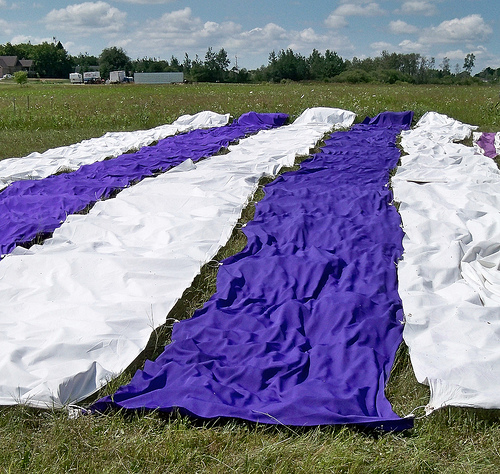The Two Row Wampum
The Two Row Wampum is considered to be the grandfather of all of the treaties between the Haudenosaunee Confederacy (also known as the Iroquois League or Five Nations (The Mohawk, Oneida, Onondaga, Cayuga, and Seneca Nations) and European Settlers. The agreement took place between the Haudenosaunee and the Dutch Settler government, who were stationed in what is now upstate New York, in 1613.
The Wampum belt (which is a physical manifestation of the treaty) consists of two purple bands against a white field. The purple lines, which run parallel to each other but never touch, represent two vessels (the Haudenosaunee canoe and the Dutch Ship) traveling side by side but never interfering in the affairs of the other. The white stripes represent peace, friendship, and a pact of peaceful co-existence.
Haudenosaunee oral tradition holds that the creation of the Two-Row Wampum meant that:
As long as the Sun shines upon this Earth, that is how long OUR Agreement will stand; Second, as long as the Water still flows; and Third, as long as the Grass Grows Green at a certain time of the year. Now we have Symbolized this Agreement and it shall be binding forever as long as Mother Earth is still in motion.
This meant that the pact of peaceful co-existence and non interference was to be the basis of all subsequent dealings between the Haudenosaunee and all subsequent waves of settlers.
As has been the case throughout the long and often fraught relationship between indigenous peoples and settler societies, the validity of the oral tradition and even the meaning of the Wampum belt itself have been called into question in an attempt to de-legitimize claims Haudenosaunee claims to Nationhood and self governance.




